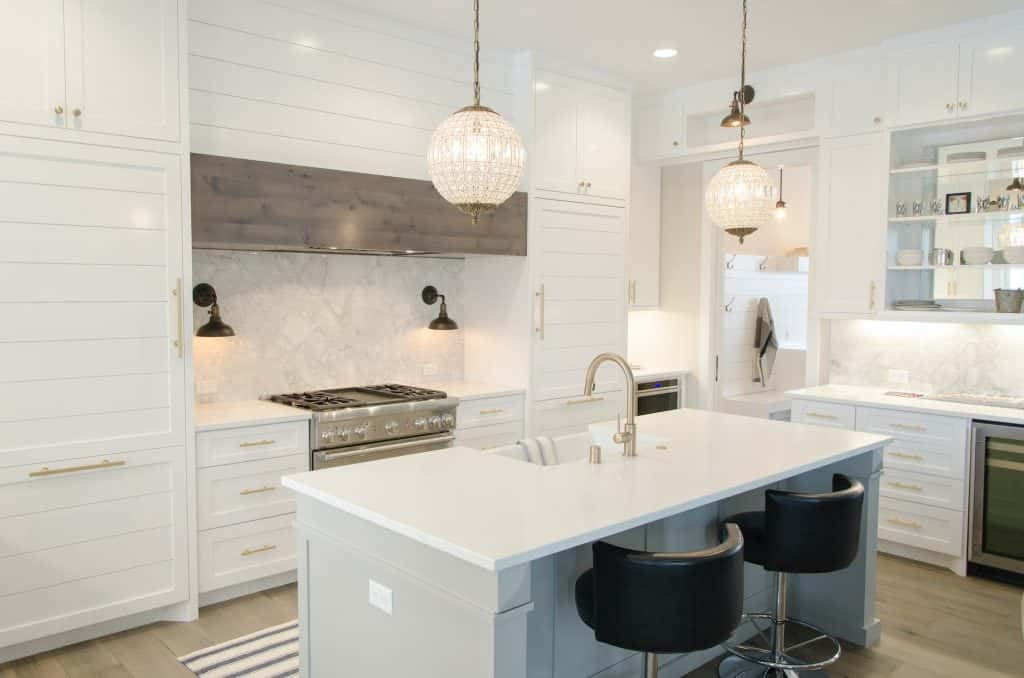Modern kitchens require modern solutions. Gone are the days when cabinets mostly used to be made of wood and steel. Contemporary kitchen decor has moved to lighter and more durable options, such as polyvinyl chloride (PVC).
PVC is a great material to build kitchen cabinets out of, as it is well-equipped to handle the regular wear and tear in an Indian kitchen. It is also strong enough to hold appliances, gadgets, and heavy containers.
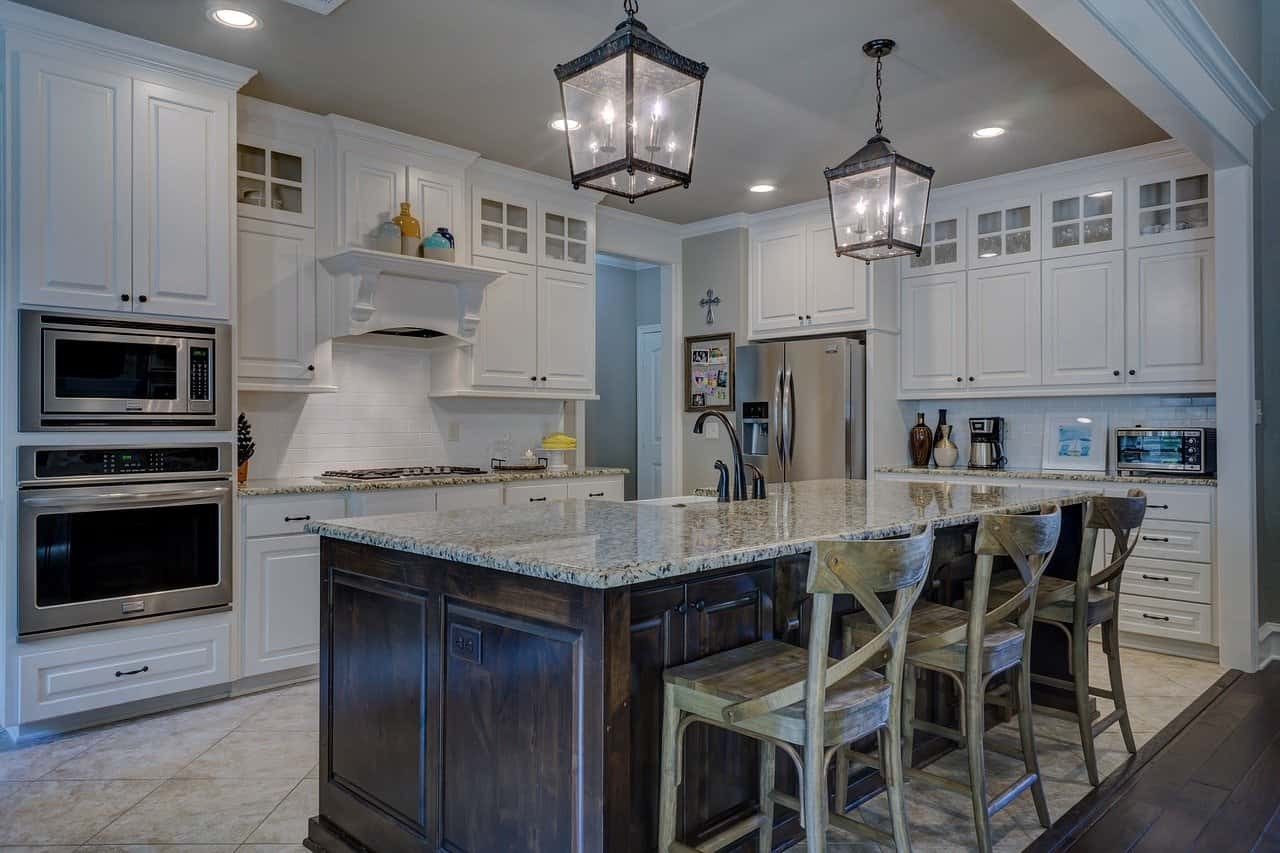
PVC kitchen cabinets have been in trend for quite some time, and their popularity doesn’t seem to be decreasing. There are several reasons why PVC has become the material of choice for modern interior designers and decorators.
Here, we will discuss the types of PVC, the benefits of using PVC for kitchen cabinets, and five attractive cabinet designs for the modular kitchen of your dreams.
Why PVC for Kitchen Cabinets?
Most of us have heard of PVC in the context of pipes and plumbing materials. So, it might seem a bit odd to the unversed to imagine a PVC kitchen cabinet. However, PVC is now being used in flooring, countertops, cabinets, etc. It has several qualities that make it perfect for kitchen interiors.
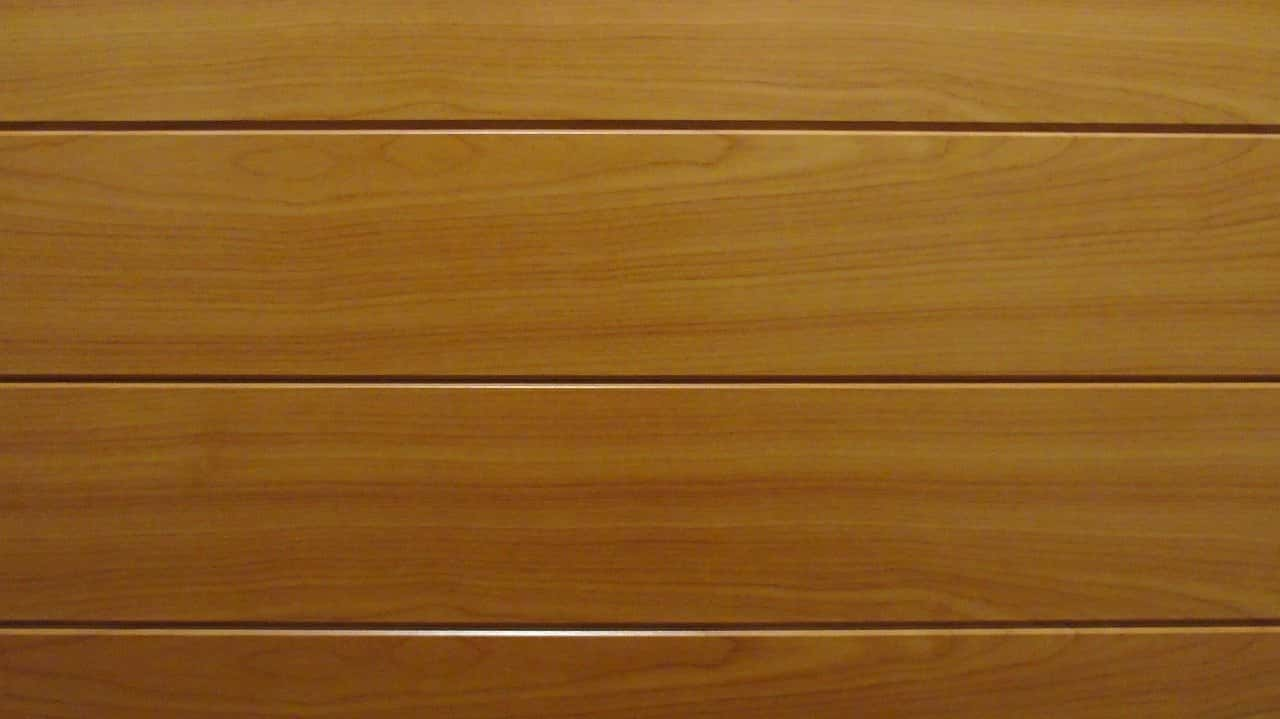 Made from mass-produced polymer, PVC is a cost-effective kitchen solution that combines aesthetics and utility. It comes in beautiful colours and styles and is also easy to clean. What else does a homeowner need in their kitchen?
Made from mass-produced polymer, PVC is a cost-effective kitchen solution that combines aesthetics and utility. It comes in beautiful colours and styles and is also easy to clean. What else does a homeowner need in their kitchen?
Oh, you guessed right! A homeowner also thinks about the budget while choosing interior elements. In that aspect as well, PVC is a convenient solution. PVC kitchen cabinets are priced reasonably, recovering the initial investment in the long run.
A completely modular kitchen with modern PVC interiors costs under ₹50,000, too, if we’re being very generous. Typically, PVC for kitchen cabinets come in ₹200-350 per square foot. The price may vary depending on the type of PVC board, colour, thickness, and customised designs.
Types of PVC Kitchen Cabinets
At present, there are two major types of PVC kitchen cabinets. They are – hollow boards and foam boards. Both these types have their own advantages and disadvantages, as we will see below.
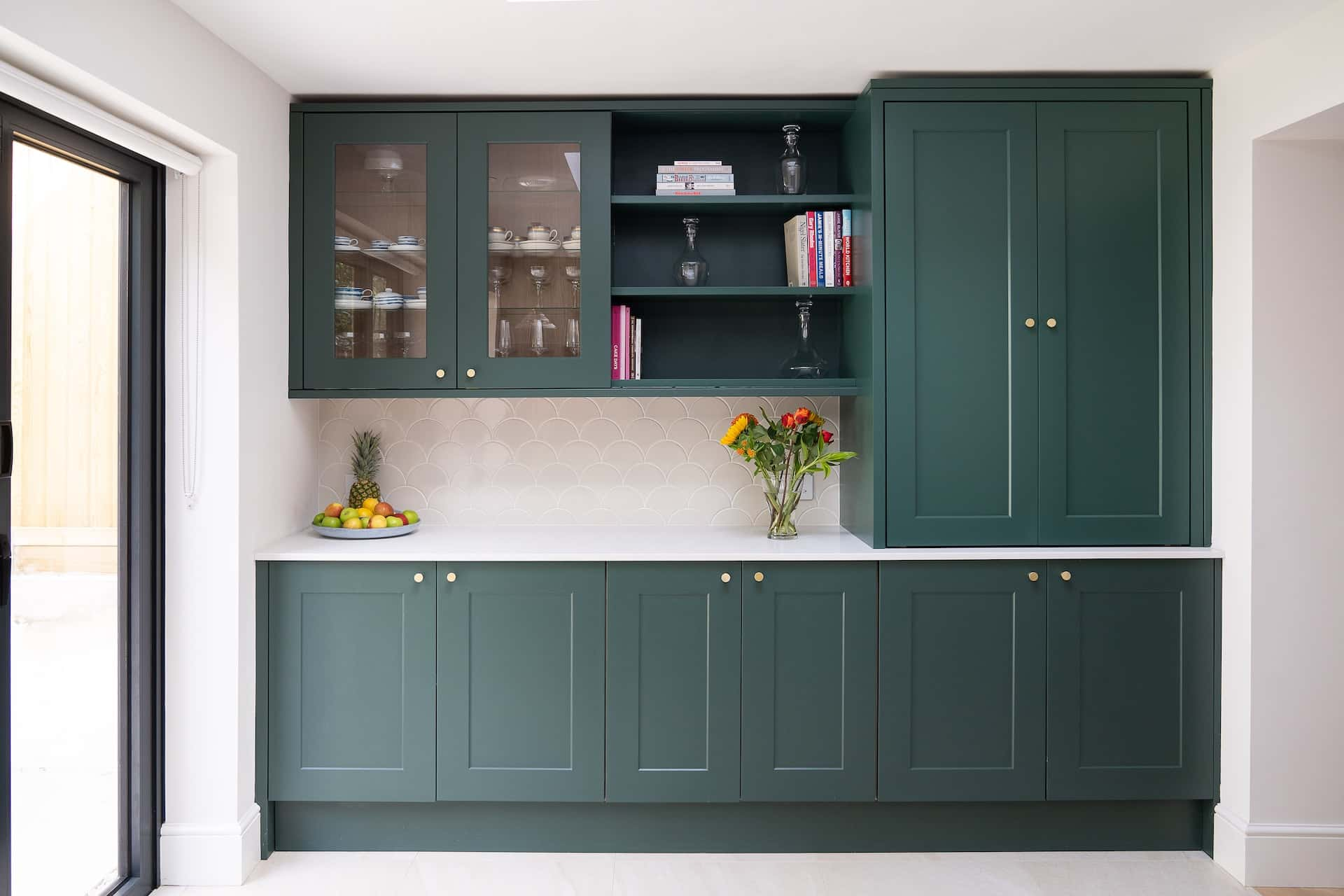
Hollow Boards
As the name suggests, these are hollow on the inside. This makes it lightweight and more cost-effective. Hollow boards are also flexible in nature. PVC cabinets made of hollow boards are available in various designs and colours as well.
PVC hollow board kitchen cabinets have these aspects as advantages:
- They are economical and cost-effective.
- The material is lightweight and suits contemporary interiors.
- These cabinets can be installed quickly on-site without many heavy tools.
- The finish is shinier than most other materials.
- A hollow board cabinet does not require separate surface finishing.
Hollow boards are between 2400mm x 1200mm in size, with thicknesses, ranging from 2mm to 35mm.
Foam Boards
The other PVC cabinet type is made of foam boards. These are thicker and more durable than hollow boards, making them stronger and more rigid in nature. Foam boards are available in glossy, matte, and laminate finishes. Laminate finish cabinets are more scratch-resistant than the other variants.
The advantages of using foam boards for your kitchen cabinets are as follows.
- These are sturdy and durable in nature, making them a more reliable choice.
- They are fire-resistant and insulated against heat.
- The material is non-toxic and hygienic.
- Such cabinets are corrosion-resistant and repel moisture.
- They are also protective against termite infestation.
- They can only be installed by skilled carpenters.
Foam boards are between 1200mm x 2400mm in size and range from 1mm to 30 mm in thickness.
Disadvantages of Hollow and Foam Boards
Experts generally prefer foam board cabinets for kitchen interiors. However, both these PVC types have a long list of advantages, so let’s make your decision easier. Here are the disadvantages of each PVC kitchen cabinet type, so you can decide which to choose.
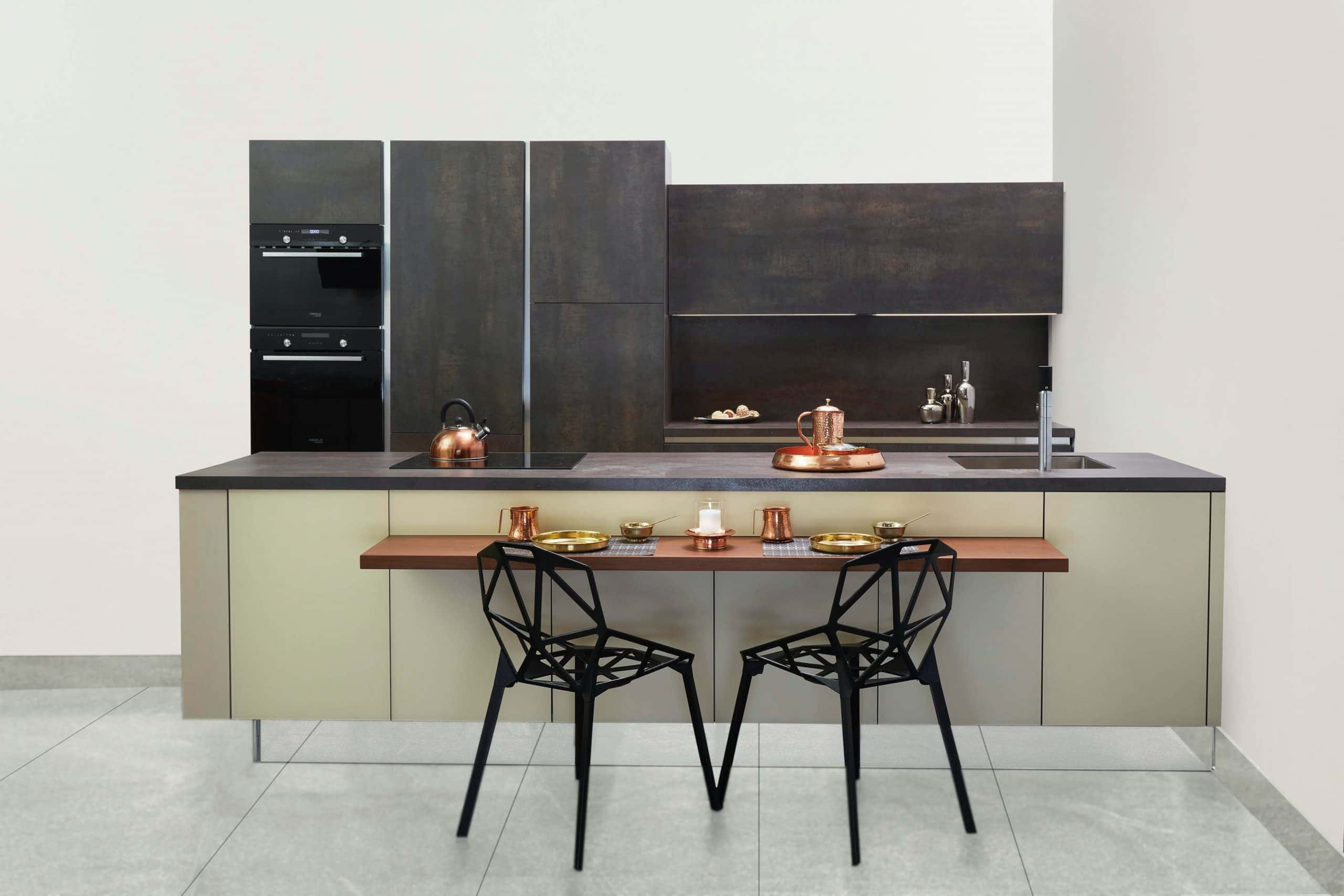
| Hollow Boards | Foam Boards |
| Not thermal resistant | Comparatively, the more expensive option |
| Cannot protect cabinets from termites or fire | Require separate surface finishing |
| Less sturdy and durable in nature | Have a less shiny surface |
| Cannot resist moisture | Cannot be installed without professional help |
Now that you are aware of which PVC board for kitchen is the most efficient, we come to another important question. Which cabinet design or type should you choose?
5 Best PVC Kitchen Cabinet Types or Designs for Your Kitchen
You can plan the kitchen interiors in a way to accommodate your preferred type of kitchen cabinet. In general, there are five popular and best types of PVC kitchen cabinet arrangements: straight, U-shaped, L-shaped, island, and parallel.
Straight
This is the simplest cabinet design in which the PVC cabinets are placed on the side of one wall. Ideally, the sink, gas burner, and other kitchen appliances are also installed on that side of the wall, with the other side left open for the refrigerator, platform, or a small dining station.
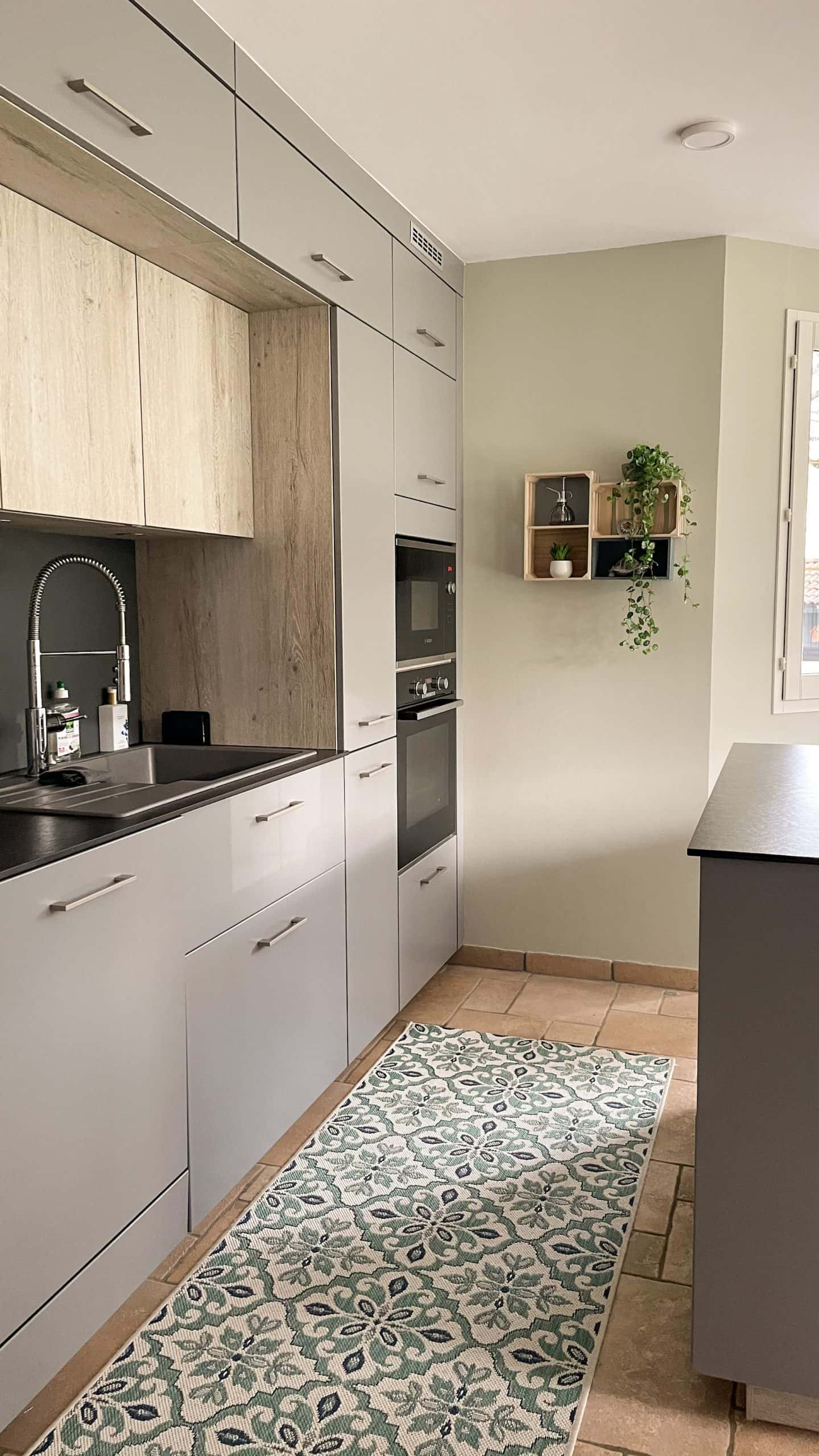
Straight cabinets are best for smaller kitchens that need smart space utilisation for maximum efficiency.
U-Shaped
Having a U-shaped PVC modular kitchen can be many people’s dream. It is suited for more spacious kitchen areas as the cabinets are lined on three sides of the wall. This way, you can have three counters to work with.
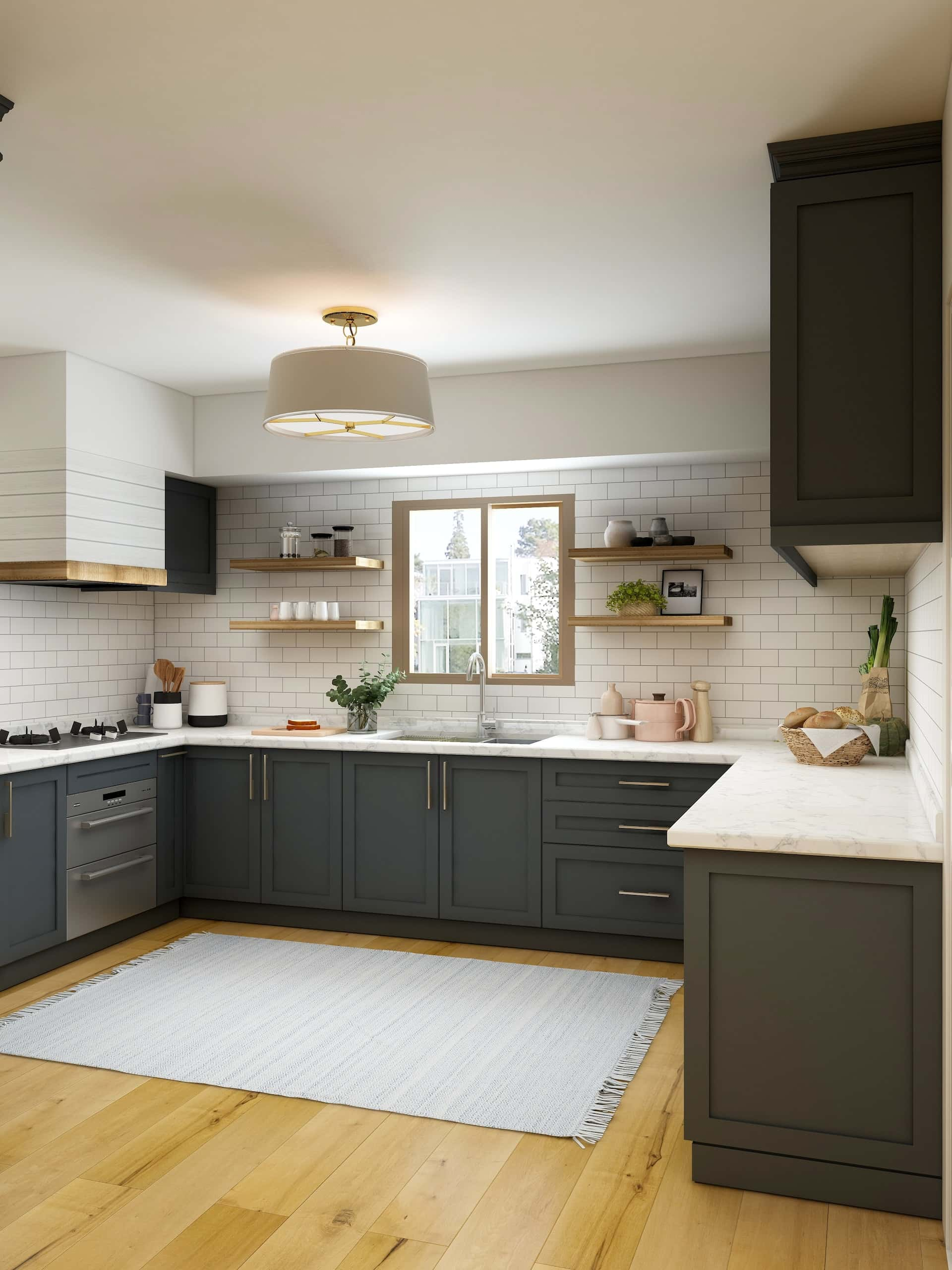
U-shaped cabinets give you more storage space. So, it is best for large families or people who are highly enthusiastic about spending time cooking in the kitchen.
L-Shaped
L-shaped PVC cabinets are arguably the most popular in Indian kitchens. In this type, the cabinets are installed on two walls in an L-shape. This also helps to utilise the corners and gives enough storage space.
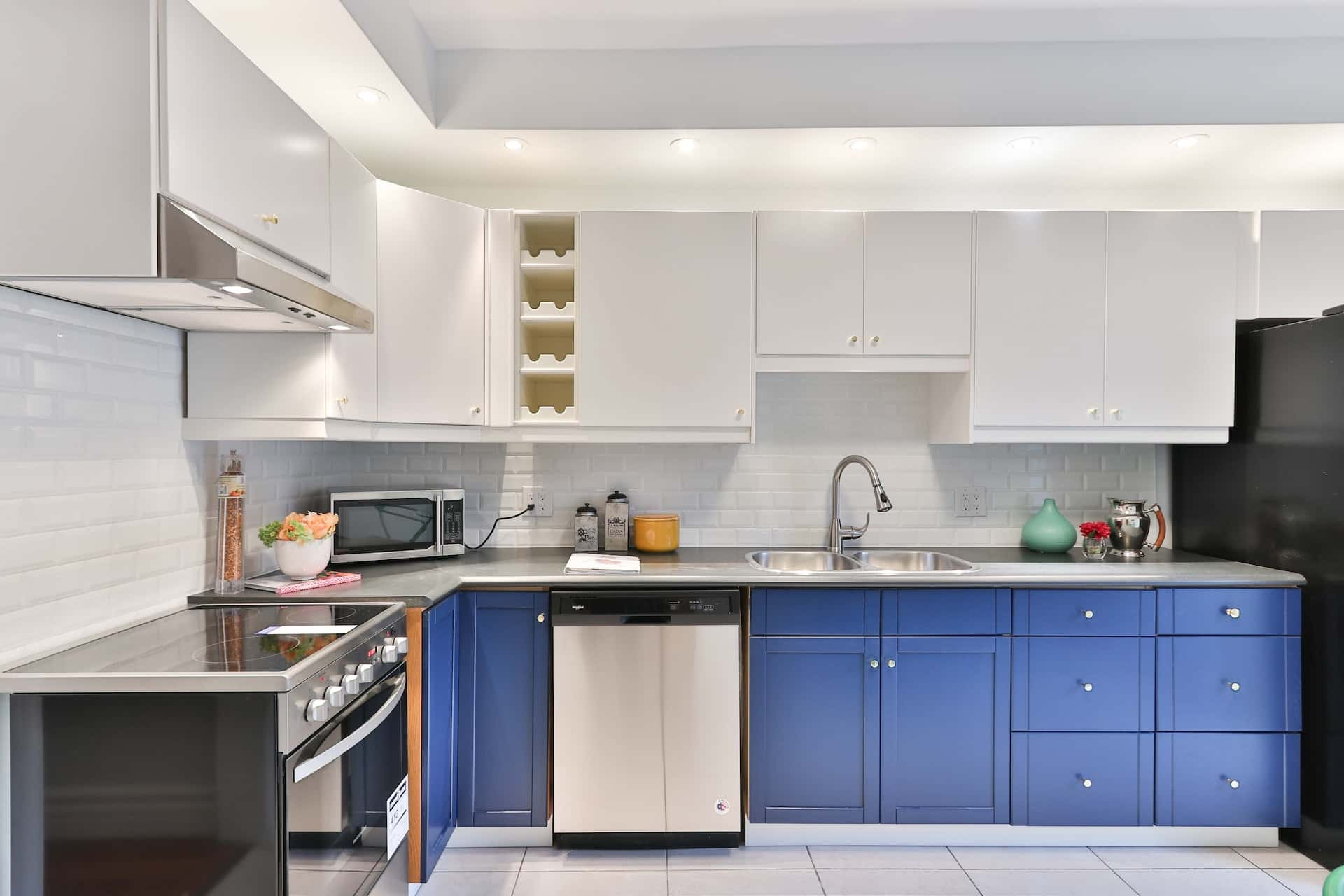
L-shaped cabinets let you sort your kitchen storage into categories if you’re into that sort of organisation habit. It is the best cabinet type to combine storage volume with space utilisation for regular home kitchens.
Island
To go fancier, you can choose the PVC modern kitchen design with an island in the centre. Island kitchens exude luxury. It is where an island counter is installed in the middle of the kitchen area, separate from the wall-side counters.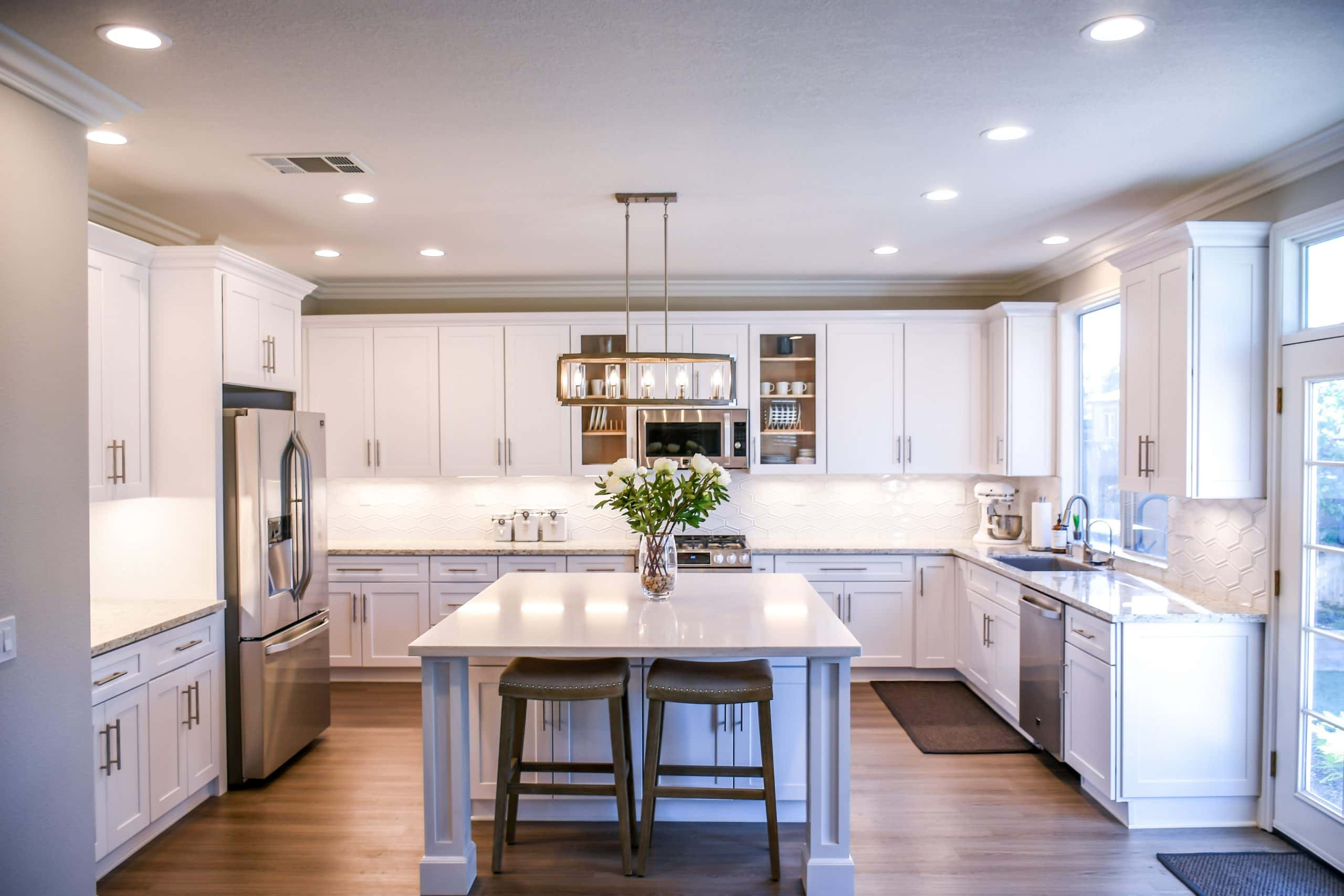 Island kitchen designs are for spacious areas. It gives maximum counter space and also creates a section in the middle where you can store stuff, install a washing area, or even double up as a dining zone.
Island kitchen designs are for spacious areas. It gives maximum counter space and also creates a section in the middle where you can store stuff, install a washing area, or even double up as a dining zone.
Parallel
In this type of PVC modular kitchen design, two different counters lined with cabinets on top are placed parallel to each other. One side of the kitchen can be used for cooking and the other for washing or appliances.
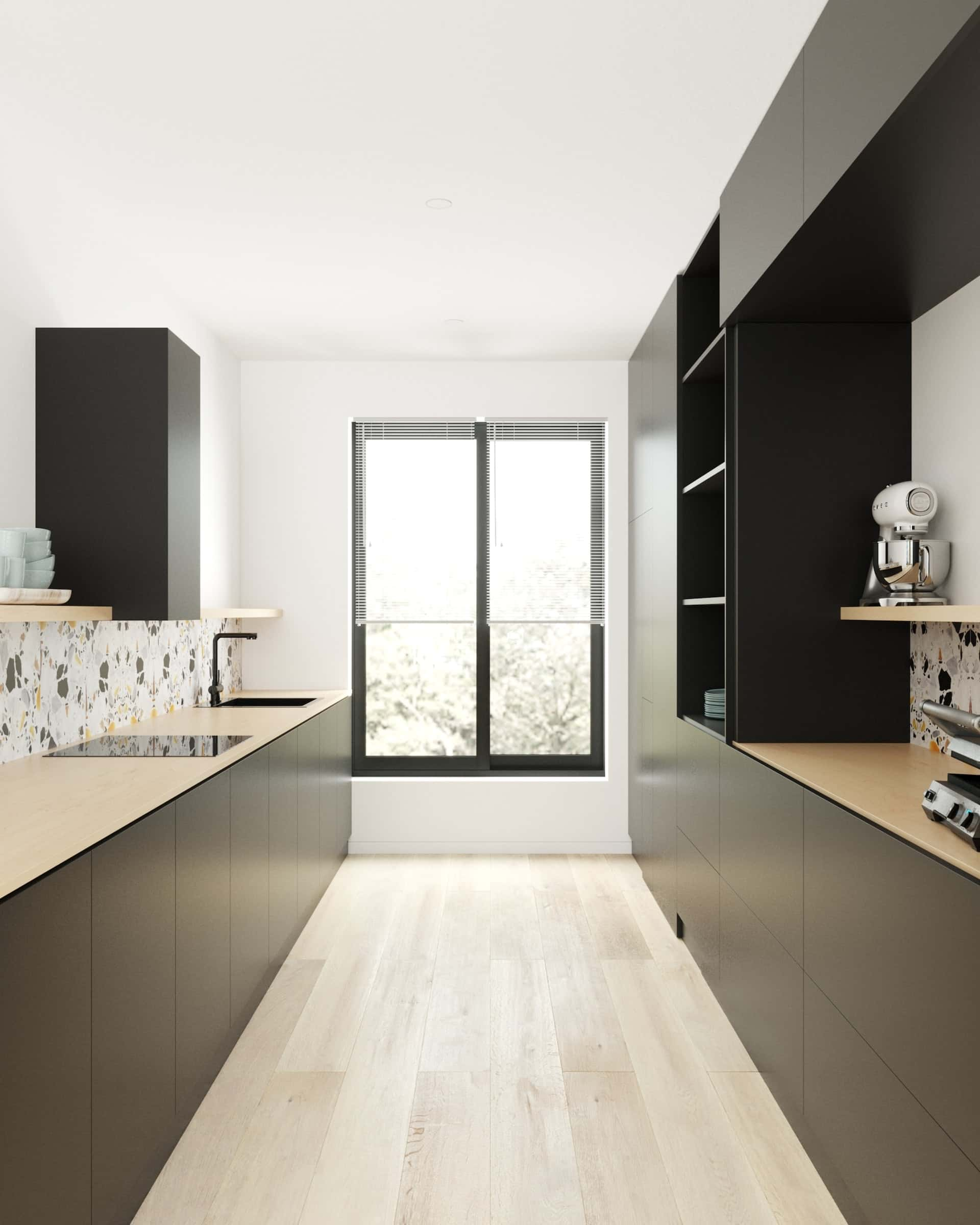 Parallel cabinets double the storage space and make the interior scheme appear classy and attractive. It is also great for modern homes with rectangular kitchen areas.
Parallel cabinets double the storage space and make the interior scheme appear classy and attractive. It is also great for modern homes with rectangular kitchen areas.
Indeed, PVC material for modular kitchen interiors is one of the most versatile options in terms of design, style, and arrangement. But is PVC a worthy choice when compared to other popular kitchen cabinet materials? Here’s what we think.
PVC vs Other Kitchen Cabinet Materials
Obviously, PVC is not the only popular option to use in modular kitchen cabinets. There are several alternatives, such as wood, laminate, metal, acrylic, and so on. So, before you decide whether PVC kitchen cabinets are the way to go, let’s discuss how PVC compares with these other material options.
PVC or Wood?
Wood has been the most popular choice for kitchen cabinets for decades. Now, PVC foam boards are giving wooden cabinets a run for their money. PVC cabinets are cheaper and easier to repair or replace.
Of course, wood has more strength and durability, but it is also expensive, difficult to install, and attracts moisture. Replacing wooden cabinets is a difficult task overall. But wooden cabinets may have more varieties in colours, patterns, and grains.
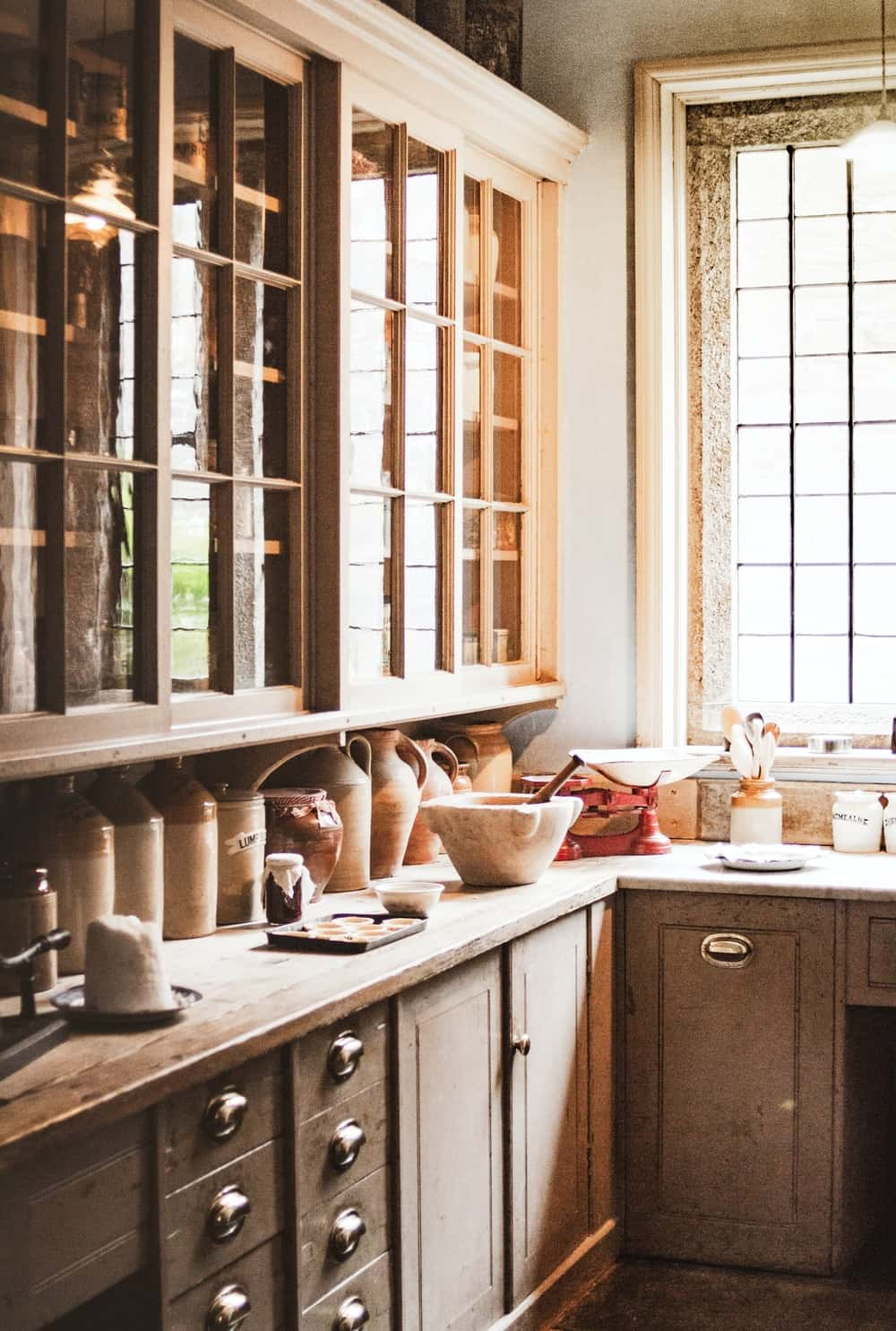
PVC or Acrylic?
Acrylic is highly popular for kitchen cabinets as it comes with a glossy finish and attractive appeal. Acrylic surfaces also reflect light and make the kitchen look bigger and brighter.
However, acrylic is a fragile material and can often be ruined at the edges. It also requires regular cleaning and is more expensive than PVC. A foam PVC cabinet with a glossy finish is a smarter option.
PVC or Metal?
Metal has always been known for its strength, so it makes sense that metal cabinets are stronger and more resistant to heat and humidity. They are also easy to clean and maintain. However, metal cabinets can look dated and have limited design and colour options. They also require cleaning and repolishing as they can be prone to rust.
On the other hand, PVC material for kitchen cabinets is comparatively low-maintenance and has a larger variety of designs to choose from. It is also less noisy than metal cabinets and looks much more suitable for modern kitchen interior schemes.
PVC or Laminate?
Laminates are one of the best and most popular material options for kitchen and bedroom cupboards. They emulate the natural look of wood or stone surfaces and come in various textures. Laminates are also cost-effective and quite durable.
In some cases, laminate cabinets are more preferred in Indian homes compared to PVC cupboards for kitchens. All in all, laminates can be considered the closest competitor of PVC cabinets.
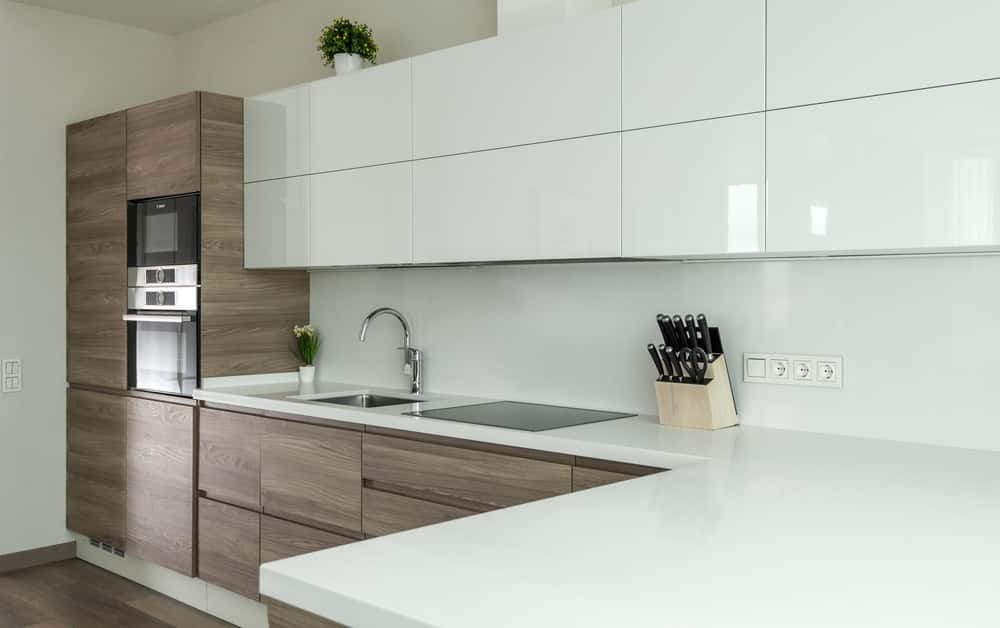
Should You Rethink Choosing PVC Cabinets?
PVC has a wide array of benefits that it brings to your kitchen decor. But before you start picking designs and colours, take a look at the short list of disadvantages that PVC kitchen cabinets may have.
- Although foam boards are stable and sturdy, there are other options, like wood and metal, that can withstand higher weights and wear and tear.
- A PVC kitchen cupboard needs detailed finishing to avoid damage over time.
- Hollow PVC boards may become home to insects and bugs over time, which may compromise your kitchen hygiene.
- Changing the fixture might be tricky.
- The surface colour may start fading after a few years.
- These are not highly fire-resistant.
Conclusion
All said and done, there’s no denying that PVC is one of the best bets for your modular kitchen cabinets. It has a trendy look, comes in various colours and styles, can be pocket-friendly, and offers long-term sustainability as well.
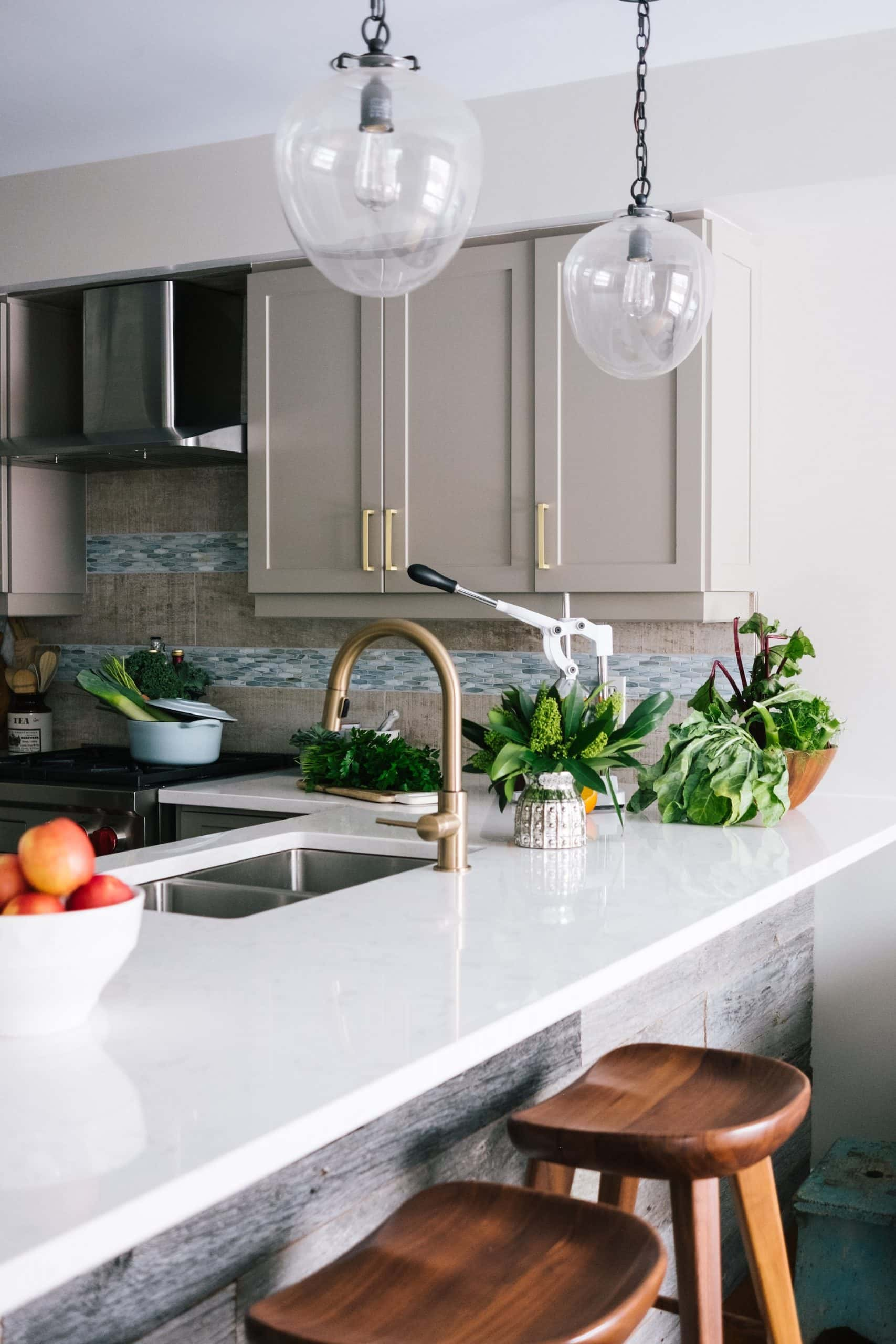
Consult HomeLane for the best design and material ideas for your PVC kitchen cabinets, and get started on creating the kitchen of your dreams!
FAQs
Is PVC safe for kitchen cabinets?
Yes, PVC is safe for kitchen cabinets due to its anti-corrosion and heat-resistance properties. PVC foam boards are non-toxic and do not contain harmful chemicals. They are also resistant to moisture, corrosion, bugs, and termites. PVC cabinets also provide a degree of heat insulation and fire resistance for higher chances of safety.
Are PVC kitchens good?
PVC modular kitchens and kitchen cabinets are one of the best and most popular choices at present. PVC kitchens are highly durable and low-maintenance. PVC cabinets are also available widely in many colours and designs. Moreover, PVC kitchens come in budget-friendly packages and can be repaired or replaced more easily than wooden alternatives.
Which is better, wooden or PVC?
Wooden and PVC cabinets have their own advantages and disadvantages. Wooden cabinets are more durable and heavy-weight, whereas PVC cabinets are cost-effective and easier to repair.
If you are seeking durability and strength, go for wooden cabinets in your kitchen. And if you are seeking a cheaper, lightweight, and more modern option with moisture resistance, PVC is your friend.

